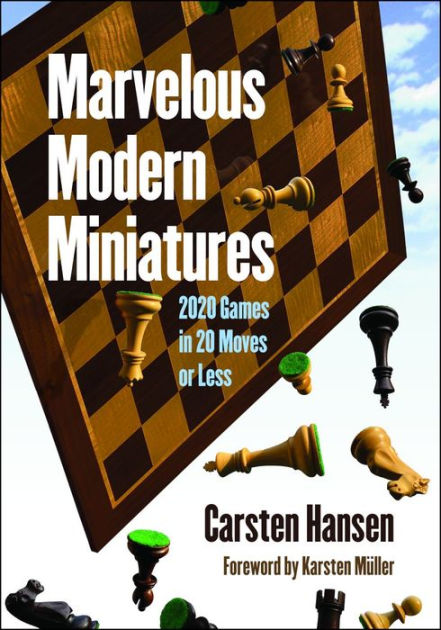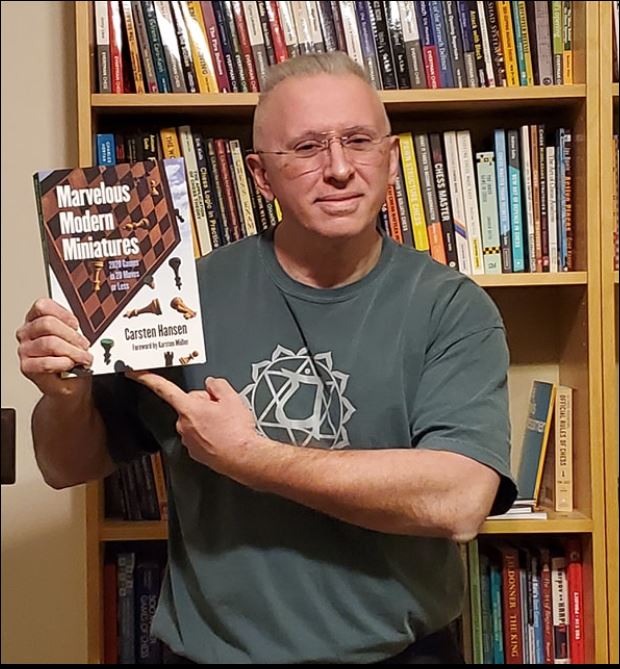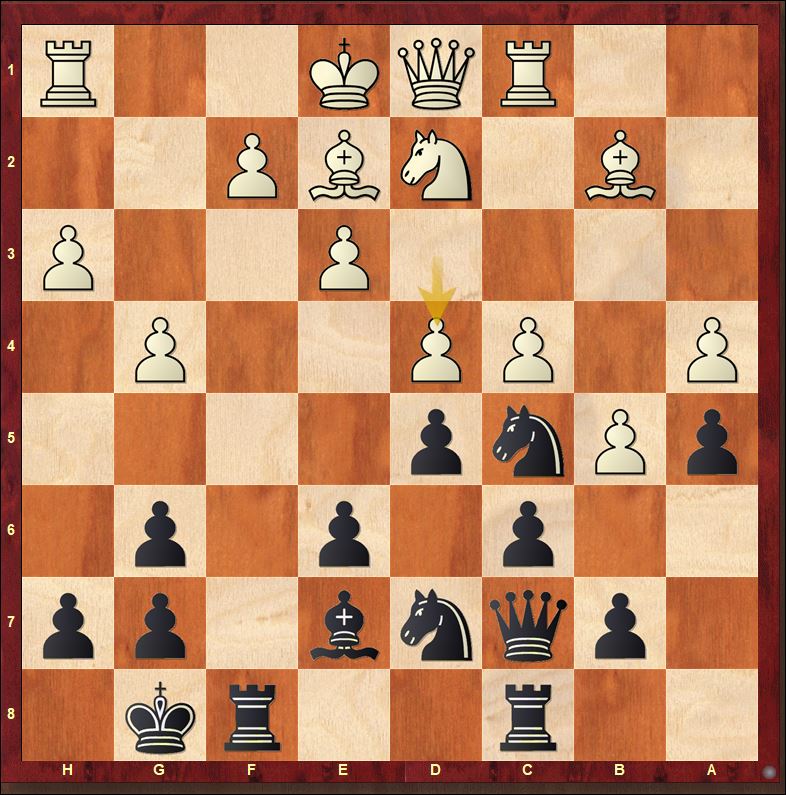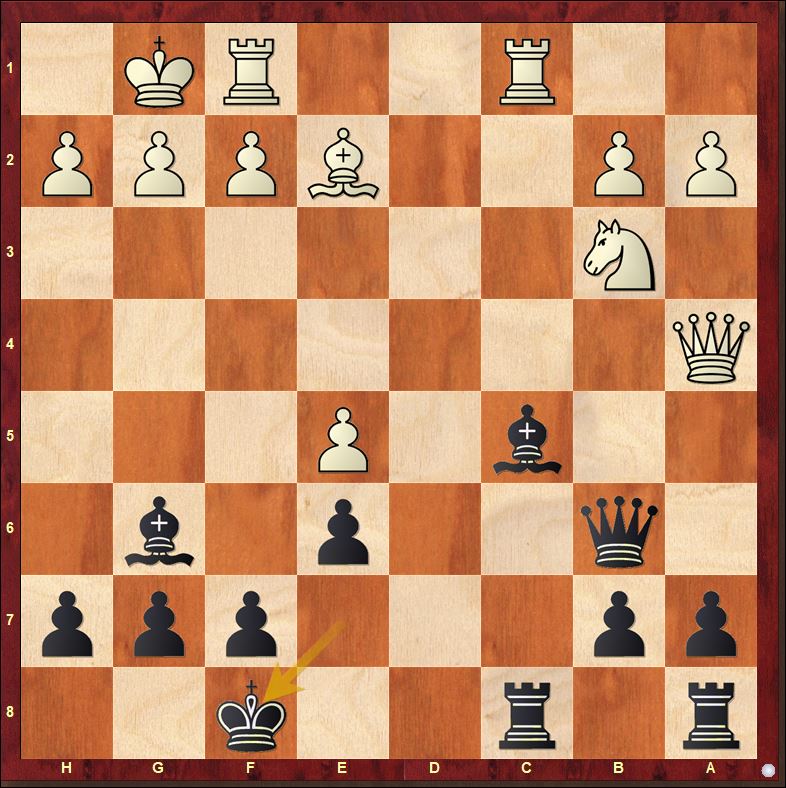
I believe the format of this book is ideal for every chess player. Yes we all want to become world champion, Grandmasters, etc. but the reality is: we don’t have time. Work, families, age etc. simply makes it impossible. So why not enjoying chess for what it is? A wonderful spectacle, worth of the most bloody battles witnessed by the Romans between gladiators in the Colosseum.

Why not taking out our dusty chessboards and pieces, and enjoy 3-5 games every day for fun?
The answer to such question is simple: we don’t know which games to watch, and we don’t want to spend time in selecting them, because we would have to go through a lot of garbage, before finding some gems.
Instead here we have an experienced coach: Carsten Hansen, who for work is watching thousand of games every year, and select positions and games which can be important for his students. In this book he has made a selection of what he has seen which impressed him, and divided it for openings.

Obviously I began to peruse the book with the openings I do play like the Dutch, and my eye got caught with some famous names, like GM Williams who is an expert in the Dutch, and got obliterated in less than 20 moves! Game 313 is the following:
And then while going through the games, I also gave precedence to watch the one of Italian players I know. The following was played by IM Arlandi. In his youth he was a possible promise for Italian chess because he was able to make the IM title quite early, in 1987. Disclaimer: in Italy chess is not being considered a sport, so we lack the culture Russia has for this sport, or the passion and numbers they have in India today. Maybe chess would have flourished in Italy if Caruana would have won the world championship, and he would not have moved back to US.
There is a comment to do about games played between humans, sometimes the quality doesn’t look very high, for example without knowing the rating of the Black player, what one would guess it to be?
While I just put here the entire game, in the book the games are annotated. Obviously being more than 2000 games it is not deeply annotated like a game collection dedicated to a world champion, but the annotations do cover the critical moments of the game.
The section on the Dutch defense is made by 79 games, mainly won by White. Now this could be seen as bad advertisement for those selling courses and dvds on the Dutch, but maybe the author made us a favor showing us how to avoid defeat, because the study of these 79 games will give us plenty of patterns to avoid! I guess also during the worst pandemic, I’m still the glass half full kind of guy!
On the Scandinavian (1.e4,d5) there are only 4 games, I guess it’s a very solid opening!
As mentioned in the beginning the author is a long time coach, and this is the main reason why one should buy the book, because Hansen even put the diagrams in important critical moments, and it’s up to us to stop and begin to think, like for the following position:

If you were Black what would you play? Let me help you out, Black is Jobava, and also if in that time his rating was just 2400, inside there was definitely a burning fire!
Here the entire game for those who want to see how it ended!
The book subtitle is 2020 games, a kind of ominous number, since 2020 definitely wasn’t a good year for most of us. However one shouldn’t think all these 2020 games are coming from the year 2020. Like the following one coming from 1979!
Another important advice one can receive is to watch games which have a 3-400 points difference, or between a GM and a minor titled player like a FM, or an amateur, as the following:
From these type of games one can learn a lot about tactical or strategic deficiencies of the weaker player, and eventually correct them in one’s own games.
The section on the Petrov defense was quite interesting for the number of top of the world rated players losing in less than 20 moves, in an opening many consider drawish.
Pro and Con: The games give only the player last name, so when a player is famous we immediately recognize him, but when a player has siblings who also play chess, for example Polgar, then it could become a problem to know who of them played that game.
One could know the player from the rating, for example Kasparov we know there are 2, one is Sergey a GM and author of chess books, but only one of the two was 2740+.
However in the index of the players is written Kasparov G.
Obviously in such huge book there are some typos like after the following diagram, in game 445, is written:

“Black misses White’s threat entirely. It is necessary for White to play 18…Bb4” Obviously the correct phrase is: “it is necessary for Black to play…”
Or at page 123 another typo: Sicilian Defesne (instead of “defense”)
Game 901 Vukovic vs Carnic was played in 1995, not in 1905 as written in the book.
Honestly these small typos are not important, and don’t change the content of the book, but as reviewer I need to mention some of them, to show the readers I also did my homework.
The player index was particularly important for this type of book, because it can immediately help us to find the games of the players we love. Karpov had 6 games in this book, while Kasparov only 3. Tal 9 games, and Bronstein 6. Shirov and Short both had 7 games.
Rausis, the latest GM caught in a cheating scandal, has 8 games, obviously we don’t know if these games were all decided by Stockfish amazing superior tactical skills or another engine running on Rausis’ cell phone.
Final thoughts: I loved the amount and variety in openings, traps, and ideas. I loved to see how many top players, and famous players, fell for some simple tactics, showing the reason I like to play against humans, and definitely not against engines, because with humans everything can happen. Honestly I enjoyed the book, without any expectation of becoming a master level player thanks to watching these games. I just enjoyed the quick battles. As mentioned before, we could, thanks to Chessbase, make a similar search of miniatures, but we wouldn’t have the critical moments analyzed or a diagram to tell us to stop, and begin to think. I also love to have in my hands a book, and replay the games on a chessboard with my favorite chess set, instead of the cold and lifeless computer screen.
Watching just 5 games a day, one will finish the book in one year, and the author told me he’s working on a sequel, hence we need to get started!
